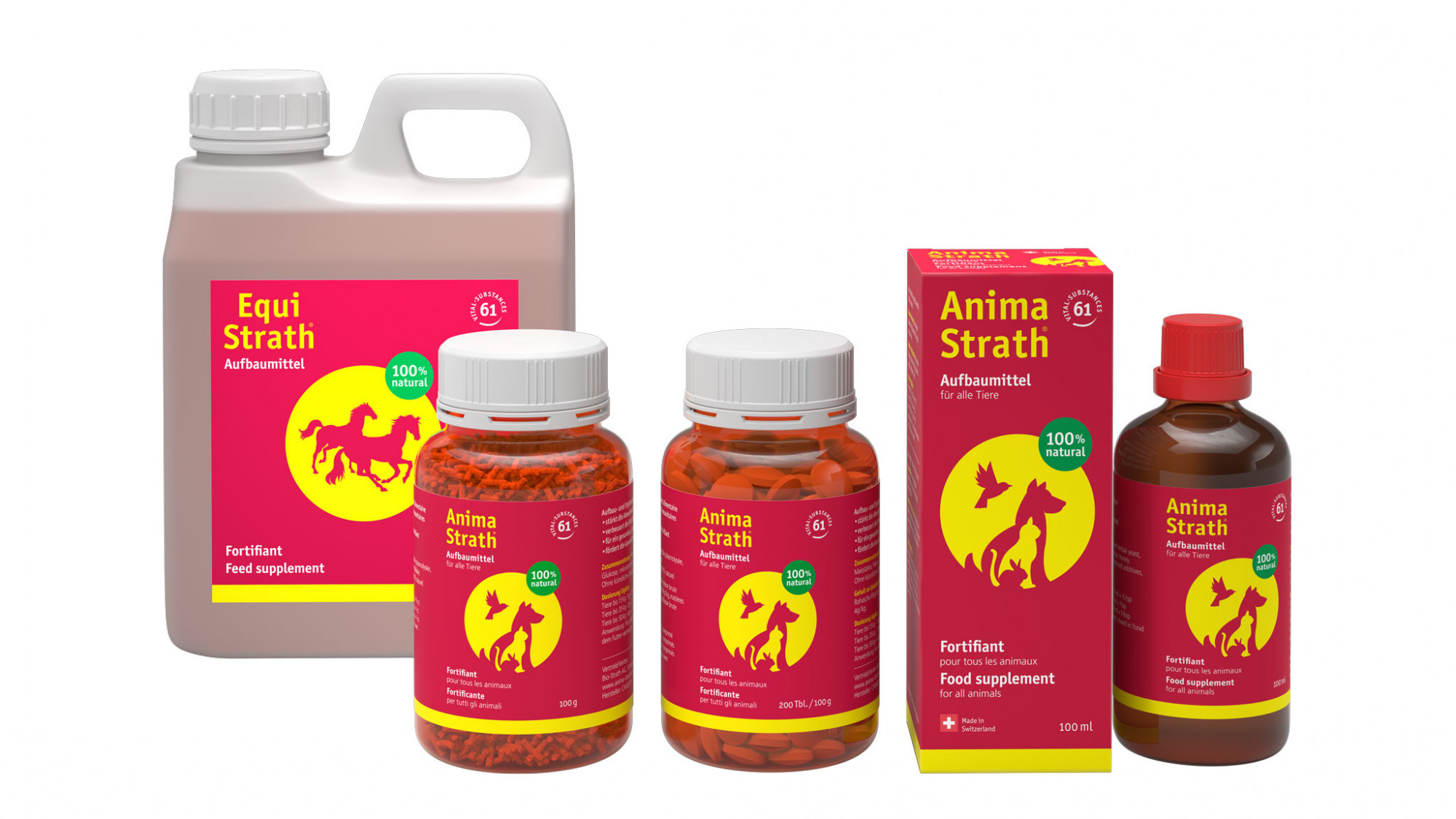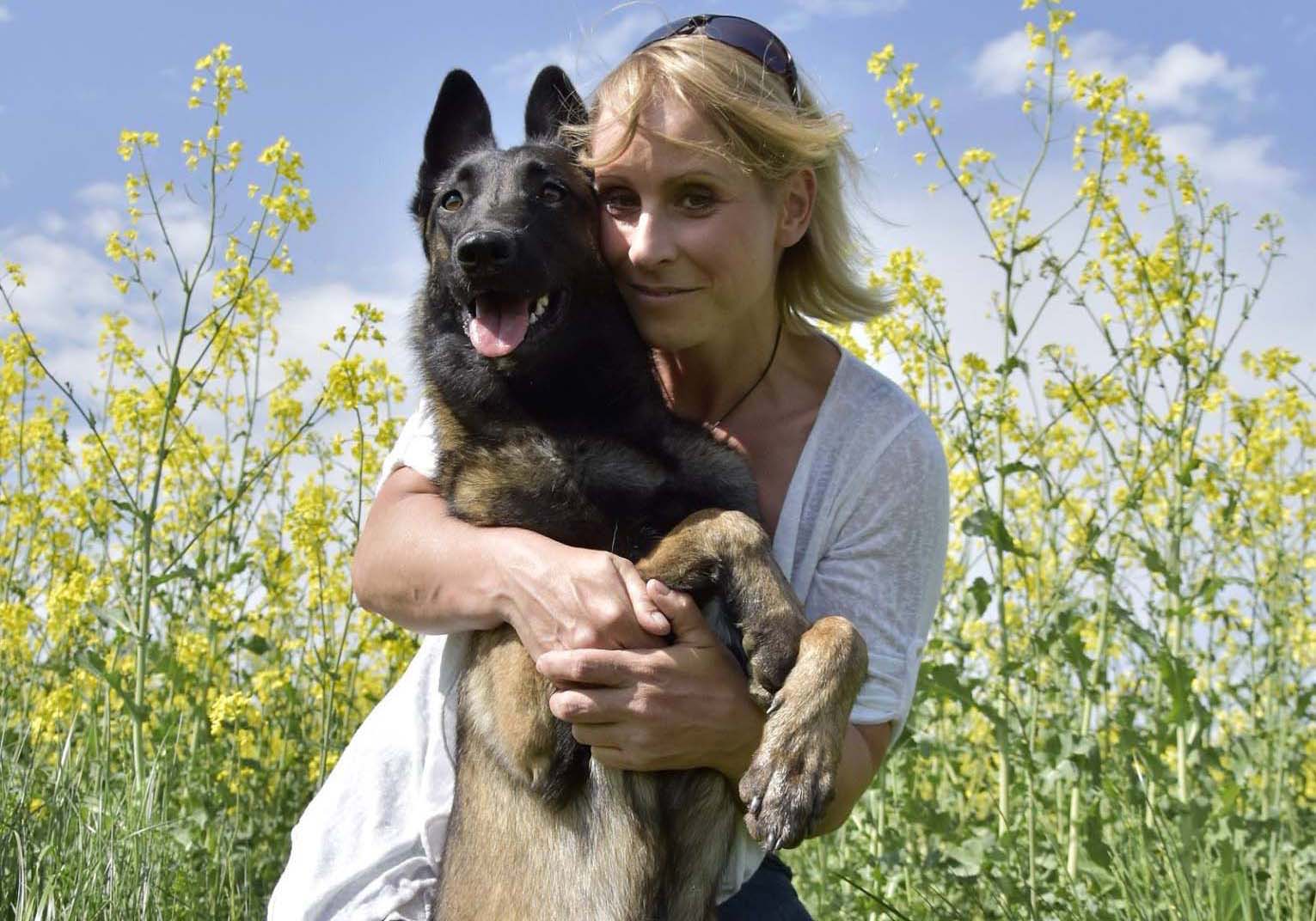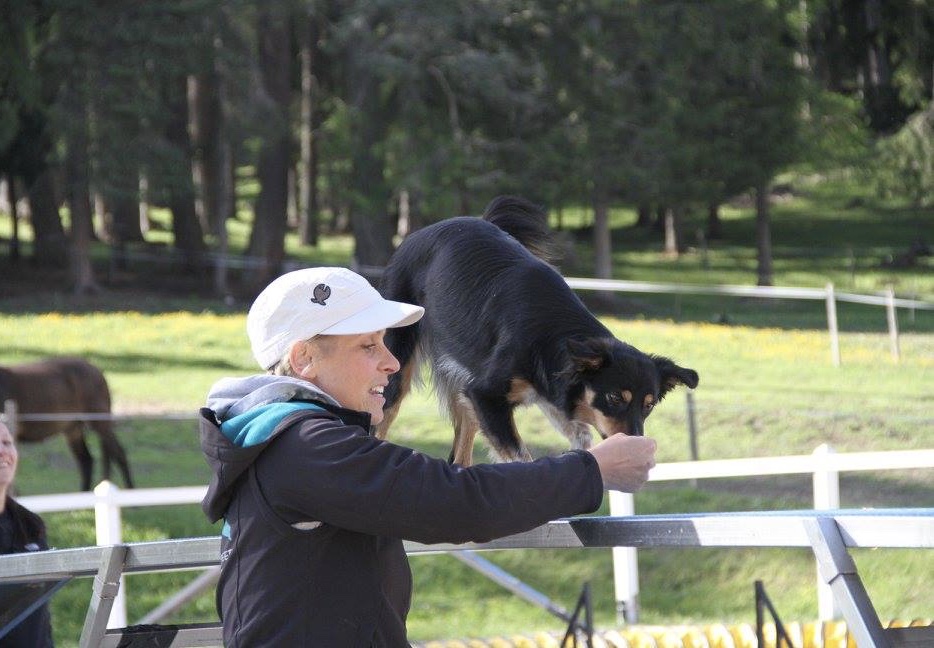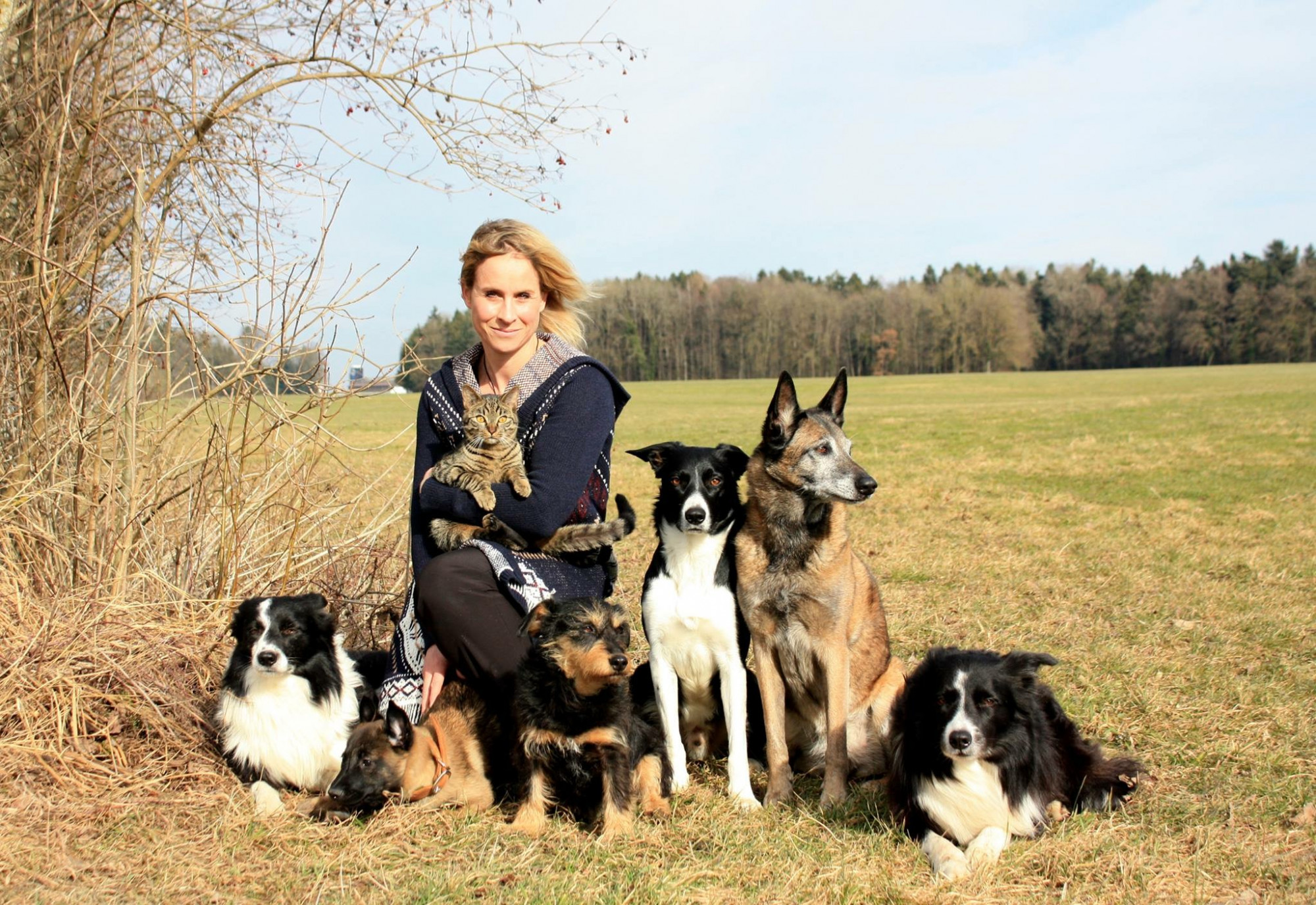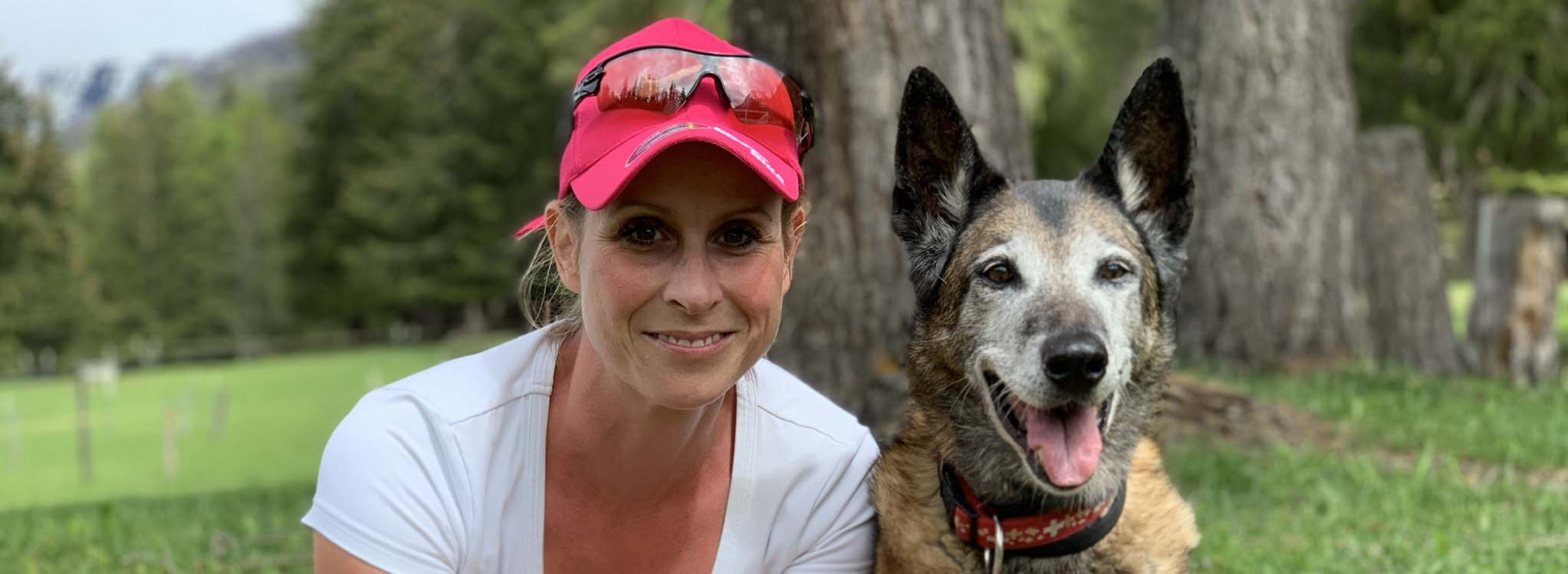
Pet blog and guide
Agility – High-performance sports for dog and human!
Agility is an energy-intensive sport for dogs in which dogs led by their handlers complete a differently set up running and jumping course through various obstacles – in a race against time! Originally designed to fill the breaks of the British dog show in 1977, this sport has rapidly developed into one of the most popular and most frequently performed sports in the world. There has even been a World Championship since 1994. Agility is extremely demanding for both the canine and the human: High-level concentration, fitness and perfect cooperation between dog and human are essential for success.
I discussed this fascinating sport with agility trainer Sarah-Jane Reimann. Having participated in the 2009 World Championship, she knows exactly what high-performance agility means. Find out her tips on how to get started, on healthy training and on a balanced diet in the following interview
Interview with veterinarian Barbara Fox and agility trainer Sarah-Jane Reimann
1. Dear Ms Reimann, you have been active in agility for 21 years now – what's the attraction for you?
Agility is a genuine power sport. It pushes you to the limit both physically and mentally. Concentration, speed, quick reactions and cooperation with your dog - I find it endlessly fascinating to try and master these challenges again and again!
2. Your dog school is called "Power and Speed". What other features does a dog need to have for agility, in addition to power and speed?
For me, physical health and a good level of basic obedience are prerequisites. Agility shows whether the relationship between the dog and human is based on trust. In many cases, that's where you need to look first to create the basics. And the dog must be taking part voluntarily and enthusiastically!
Sarah-Jane about Anima-Strath
I have been a big fan of Anima-Strath for years! It does my animals good.
- You have 6 dogs yourself, with the oldest pack member being nearly 17 years old. Do you use feed supplements?
I'm a big fan of Anima-Strath! Whenever I see that one of my animals is a little off, I feed him a course of Strath. After operations, during fur charge or if the quality of their excrement has changed – I give Strath granules to my dogs and also to my horse. Strath is good for my animals and is very well tolerated without containing any artificial flavourings. I don't use any other food supplements other than Strath.
-
So in your opinion, all breeds would be suitable for agility?
Generally speaking, all dogs can take part in agility. But the size of the obstacles makes it more difficult for very small and very big, heavy breeds. In both of these cases, getting over the obstacles can result in a disproportionate strain on the joints. But we need to distinguish between leisure and competition levels. As a trainer, I bear great responsibility, and there may be times when a dog needs to be excluded for health reasons. If in doubt, I recommend discussing it with your vet. -
Ms Reimann, you have been training agility teams for 13 years now. What advice can you give to interested dog owners on how to get started?
I recommend asking for detailed advice and attending a formal training. To begin with, as a trainer, I take a direct approach in the dog's learning process. As a first step, I make sure that both the dog handler and the dog understand what is expected of them. For this, I lead the dog through the obstacles myself and explain to the dog handler why I'm doing what I'm doing. The most important thing is for the dog's first contact with the obstacle to be positive! I work through each device separately with the dog and set up the training session as a game. We use a lot of positive reinforcement and rewards. Once the dog handler has understood the process and their purpose, he can be integrated actively and can complete the obstacles with his dog himself. -
Do you use this type of training to prevent unnecessary frustration?
Precisely! Many dog handlers who are new to agility start off feeling overwhelmed. They don't yet know how to give their dog helpful hints. This can quickly lead to certain expectations which, if success isn't forthcoming, can turn into frustration. As a trainer, I take up a neutral position and say: "Take it easy, let the dog sniff around and try things out first. How could he possibly already know what to do?" That keeps the training session positive for the dog and for the owner, which makes learning much easier. -
What do you think about setting up one's own dog training course at home?
If you are already experienced, there is no reason not to.
But I wouldn't recommend this for absolute beginners. If a dog falls off an obstacle, he will be afraid. That's not a great start! And there is a high risk of injury with certain equipment if the dog isn't led properly. -
In your opinion, what are the most frequent injuries contracted during agility?
I see injuries to the claws and pads most frequently. Pulled muscles also occur every now and then. But these and many other problems can be largely prevented by keeping the amount of training to a reasonable level and ensuring a good warm-up phase. And it's also important to take frequent breaks! I normally don't let my dogs practise agility more than once a week – if the training is targeted, that's enough to ensure success during competitions in my opinion. -
In addition to balanced training, nutrition is also essential for physical fitness. BARF, home cooked or dry feed – what's your philosophy?
Many people in the tournament scene are advocates of BARF. If it's done right, it can no doubt be great. But unfortunately, I meet many laymen who simply don't have the necessary knowledge so that a dog can fail because of deficiencies or malnutrition, in spite of the best intentions. It is very important to get expert advice on a regular basis! I personally feed my dogs dry feed from a reputable brand and have had good experience with this type of feed. I match the amount that I feed to the strain faced by my dogs at the time. My pack is very active; in addition to doing agility, they also accompany me during horse-riding and cycling. My border collies are also trained to work with sheep and active in this area, too. On days when they've exercised a lot, I might give them some extra fee.
- May I ask how you discovered Anima-Strath?
I got to know Strath through using it myself. After operations and treatment with antibiotics, I had a lot of intestinal issues. My pharmacist recommended Strath at the time and it worked extremely well. Strath is simply a miracle cure! Later on, by chance, I came across Anima-Strath at the pet shop and thought: "Well, that's something!“. It's not easy to convince me. But Strath helped me, and I was sure that it would also be very good for my animals.
Ms Reimann, thank you for an interesting interview! Best of luck to you and your animals, and stay healthy!
Vita:
Curriculum vita:
Sarah-Jane Reimann has taught agility at her dog school "Power and Speed" for 13 years. Her training sessions are held in the Neftenbach ZH sports hall and on her outdoor training area in Birwinken TG. She has by now trained more than 100 dog-human agility teams. She finds the joy experienced by her students on their progress at least as motivating as their success during competitions.

